Table of contents
Getting Started with Safety Sheets
Thursday December 21, 2023-15 min readIntroduction
An SDS (Safety Data Sheet) is a document that provides detailed information about each of the hazards that a product puts a user at risk for, and safety precautions. OSHA requires that employers maintain copies of SDS’s for each chemical in the workplace classified as hazardous.
The Safety Sheets app is used to track this documentation for chemicals used within an organization, as well as verify that proper compliance is upheld with regards to training and notification of employees. This guide will cover everything you need to know about Safety Sheets including where to find safety sheet files, how to create new records, how to send approval requests for a safety sheet and where to find the necessary training for a particular chemical or part.
Let’s get started
To open the Safety Sheets app, go to the Operations category and select Safety Sheets.
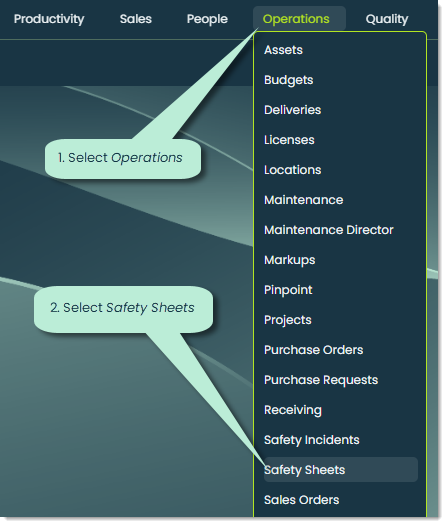
When you first open the app, you’ll see a list of all the safety sheets that your organization has uploaded.
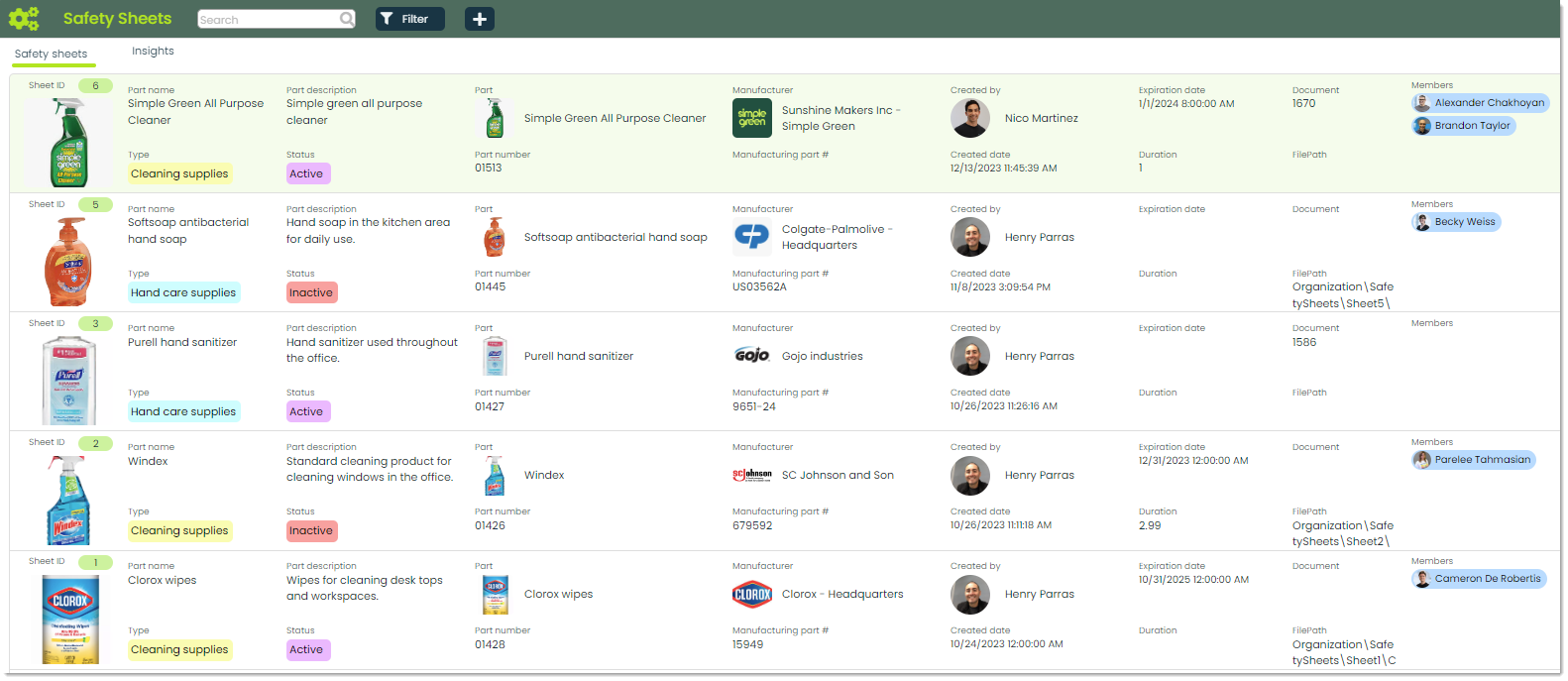
For each safety sheet, you can find details like:
- The part or material it’s for
- Type
- Description
- Current status (active, inactive)
- Part number and manufacturer
- Creation details (creator and date)
- Expiration date
- Duration of validity
- Document information (ID and file path)
- Editing members
We’ll cover what each of these fields mean in the next section.
Insights tab
The Insights tab gives you a visual way to analyze data related to the safety sheets your organization has. You can make your own insights with custom SQL queries and use charts or tables to display the data. Some useful insights for Safety Sheets might include things such as tracking the number of active safety sheets, identifying the most frequently used materials or understanding the expiration status of safety sheets. You have the flexibility to tailor insights based on your organization’s specific needs. Dive into the data, create custom queries and visualize trends using charts or tables.
How to add a new safety sheet
To add a new safety sheet, click the + button at the top of the app window.

The first thing this will do is open a menu to select the sheet file. You can either select from the options below or leave this decision for later by click the X button.
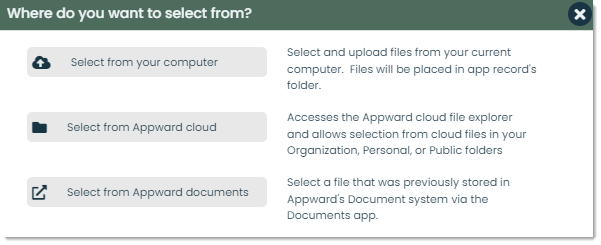
After you’ve either selected the file or exited from that popup, another popup will open for adding the details of the sheet.
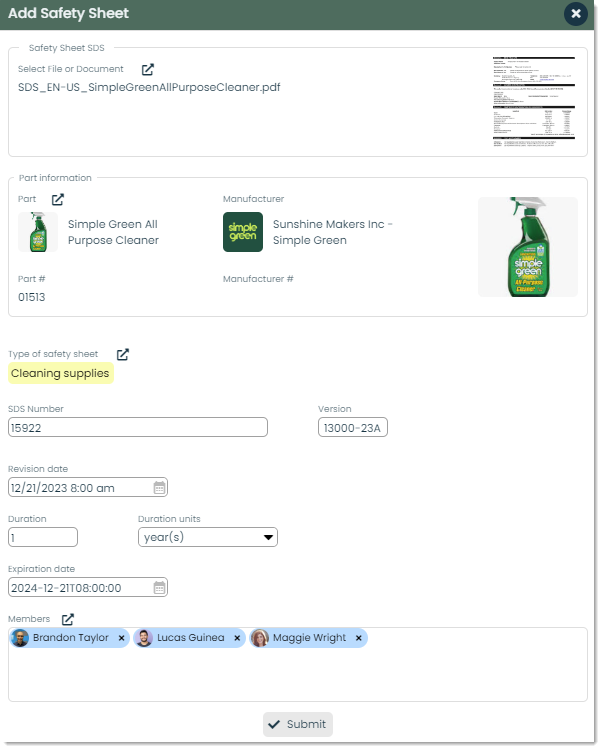
Let’s go over the different fields of this popup.
Safety Sheet SDS – An SDS is obtained from the manufacturer of the chemical or part that requires one. To access an SDS, you can either search for it with a general search engine, or visit the specific manufacturer’s website to obtain the PDF. Once you’ve downloaded the PDF, you can attach it here from by clicking the link icon and selecting it from your computer. Optionally, you can create a document in the Documents app containing the downloaded sheet and choose the file from there. For more on creating documents, check out our guide on Getting Started with Documents.

Part information – Typically, an SDS is connected to a part from your Parts app. To make this connection, start by creating the part record in the Parts app. For more information on how to create a part, check out our guide on Getting Started with Parts. Once that’s done, link the sheet to the part, and all the part information will automatically get added to the sheet record.

Type – You can indicate the type of sheet with this field. Types are part of a system used throughout Appward to classify different records of an app. These types help organize and categorize information consistently, and you have the flexibility to tailor your types to whatever your organization’s needs are. So, when it comes to your safety data sheets, using this field can greatly enhance the organization and accessibility of crucial safety information. You might designate types such as Chemical, Biological or Physical Hazards to categorize safety data sheets based on the nature of the substances involved. For more on Types, check our our article on Using Types.

SDS Number – An SDS number uniquely identifies a particular sheet, making it easy to reference and retrieve information about the chemical or product.

Version – An SDS version refers to a specific edition or iteration of the safety sheet. As information about chemicals may be updated due to new research, changes in regulations or modifications to the product itself, SDS versions help to keep track of these revisions and ensure that users have access to the most current and accurate safety information.

Revision and expiration dates – The SDS revision date signifies the latest update to the sheet’s information. By specifying a duration for the validity of this revision, you can conveniently establish an expiration date. This approach allows for a practical and straightforward system: either set a duration from the revision date, and the expiration date will automatically calculate, or input the known expiration date directly from the sheet.
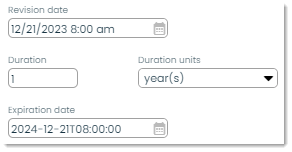
Editing members – While it’s essential for most SDSs to be accessible to all employees, the capability to edit these sheets should be restricted to a select group of individuals. Enter the Members system. By clicking the link icon in this field, you can designate a specific group of contacts within your organization. Only this chosen group, along with the sheet’s creator, will be granted editing privileges, ensuring a controlled and secure environment for managing crucial information.

How to view or edit the contents of a safety sheet
Once a safety sheet has been created, anyone from your organization can view its contents by clicking on it from the main list.
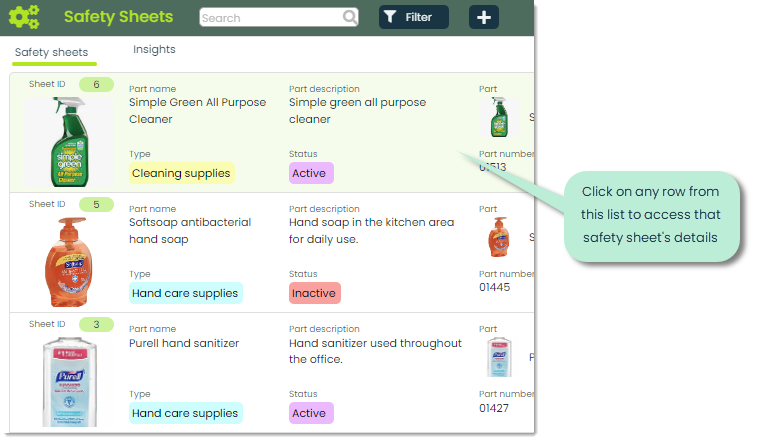
A flyout similar to this will open:
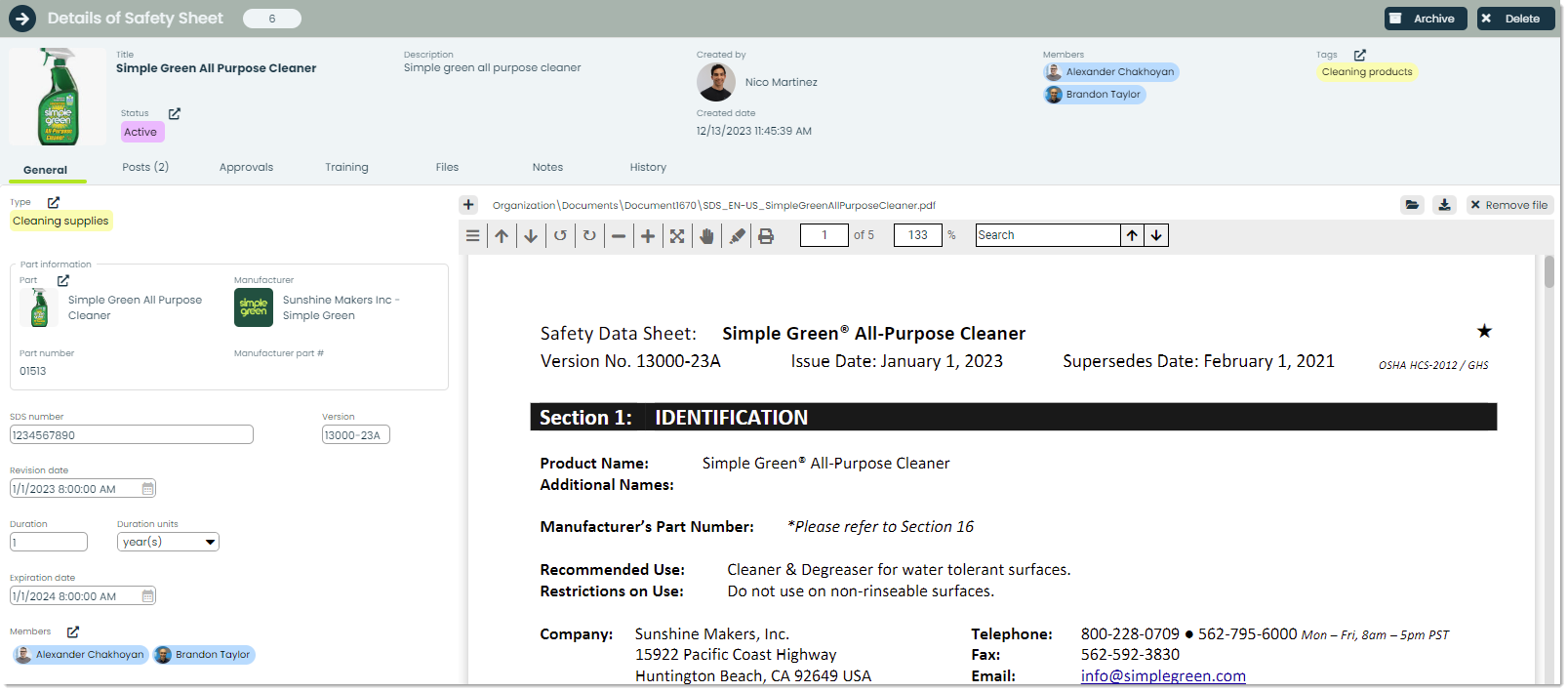
If you are the creator of the SDS record or a selected member, you can edit the information on this page to change its contents. All changes are saved automatically. Let’s go over some of the additional fields on this page:
Status – Each SDS is assigned a status to define its current stage of validation, approval or completion, with key statuses including Pending Review, Approved, Active and Inactive. This status system serves as a vital indicator, offering a straightforward means to identify the SDS’s position in its lifecycle. Users can easily discern whether the sheet is awaiting review, approved for use, currently active, or flagged as inactive.

Tags – Tags offer a complementary approach to categorize and structure your records within any app. Much like Types, they contribute to a systematic record classification, offering insights into each record’s content. Unlike Types, which are generally more fixed classifications, each record limited to a singular type, Tags provide a more flexible approach. For any given record, you can attach multiple tags, enhancing its context with as much relevant information as needed. Tags are versatile, serving as a dynamic tool for filtering specific records and gaining valuable insights. For a deeper look at the Tags system, check out our article on Using Tags.

New sheet – You can select a new sheet for a particular record by clicking the + button pictured below.
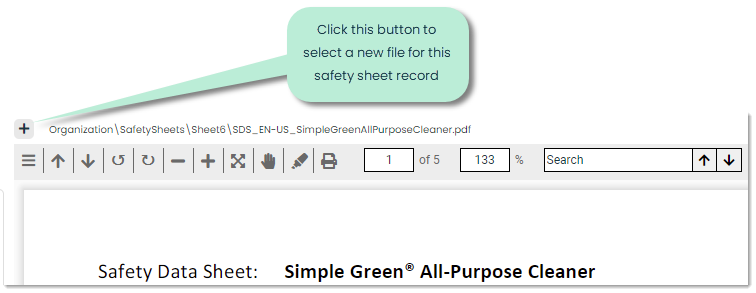
Show files – Whenever you create a safety sheet record, a corresponding folder is generated within your organization’s File Explorer. Clicking the folder button opens the Appward File Explorer directly to that location, providing a view of all uploaded files associated with the record. Within this folder, you have the capability to upload, download or delete files, streamlining file management for each safety sheet record.

Download file – Click the “Download” button to obtain the current file associated with this safety sheet record. This lets you secure a copy of the file for reference or external use, ensuring convenient retrieval.

Remove file – To remove the currently attached file from this record, you can use this feature.

Archive – Archiving is a practical feature that acts like a storage space for records, providing a secure and separate location from the main list. It’s a useful tool for discreetly managing records that don’t need constant visibility. With archiving, you can keep your data organized and streamlined, ensuring that relevant information is easily accessible, while maintaining a focused and clutter-free main list.

You can check your archived records anytime using the filter feature in the main app header. Under the Archived section, checkboxes let you manage how you view these records: exclude them, include them or show only the archived ones.

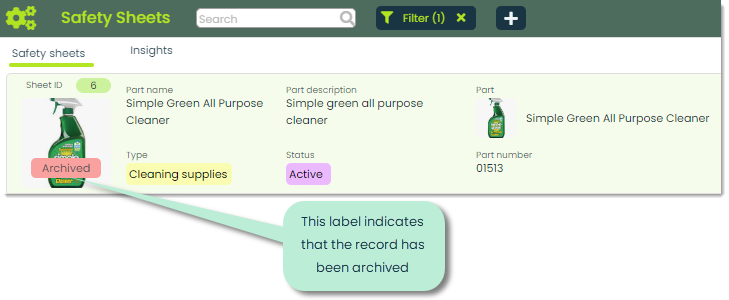
Delete – To completely remove a safety sheet, utilize this feature to delete the record. A confirmation popup will prompt you with a yes/no option, ensuring you confirm your intention to delete the record. Exercise caution when using this feature, as a deleted record is irretrievable — once removed, it’s gone for good.

How to handle Safety Sheet Approvals
Approval requests for SDS’s are typically part of a structured process to ensure that the information presented in the SDS is accurate, compliant with regulations and meets the safety standards of the organization. The approval process helps verify that the content of the SDS aligns with internal policies, regulatory requirements and the specific needs of the company. To request approval of an SDS from the appropriate parties of your organization, you can go to the Approvals tab within any safety sheet’s details and click the + button.
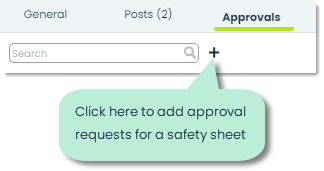
This will open a popup for adding new approvals. Here, you can name the approval request, pick who needs to approve it, decide if you want to alert them, set a due date, add a reminder before it’s due and throw in a comment to give some background for the approvers.
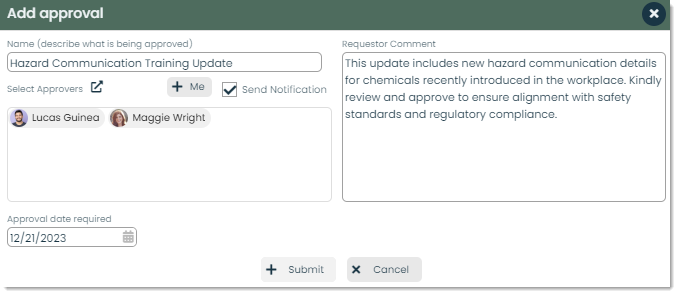
Once the approval request is submitted, each chosen approver will receive a notification, prompting them to review and either approve or reject the request. They also have the option to include a comment for additional context. The progress and status of these approvals can be conveniently monitored from the Approvals tab within the safety sheet record.

Training
Some chemicals and materials require special training prior to use. Within the Training tab, you can link specific training classes to a particular safety sheet by clicking the + button and selecting the appropriate classes from your Training Director app. This enables you to include all the necessary training for handling a specific chemical or component. Additionally, you can easily track who has completed these classes, providing a clear overview of trained individuals associated with the safety sheet. For more on creating classes in Training Director, check out our article on Getting Started with Training Director.
How to use the other Frontline Features of Safety Sheets
In each application, you’ll find a set of core Frontline Features neatly organized in the Details flyout. For Safety Sheets, these practical features include:
- Posts
- Files
- Notes
- History
Posts – Posts act like an in-app bulletin board, making it easy to share updates and communicate within your team about a particular safety sheet right from the Safety Sheets app. Mentioning others using the @ symbol lets you notify specific contacts or departments, and they can jump straight to the relevant record in the app from their notifications. It keeps everything connected and in context. You can also like and reply to posts, creating a space for straightforward and meaningful dialogue.
Files – In the Files tab, you can attach important documents to your safety sheet records. This feature allows you to add as many files as necessary and view them using the embedded document viewer. It’s a practical way to include and review relevant documents within the context of the safety sheet.
Notes – With the Notes tab, you can capture quick thoughts and details directly within the app, making it a handy tool for on-the-go annotations.
History – The History tab is your record-keeper for recent actions on safety sheet records. For Safety Sheets, it’s crucial in tracking who has viewed a specific safety sheet. This feature is important because it ensures employees are checking and acknowledging essential safety information. It’s a practical tool that encourages accountability and keeps everyone aware of their engagement with crucial safety documentation.
